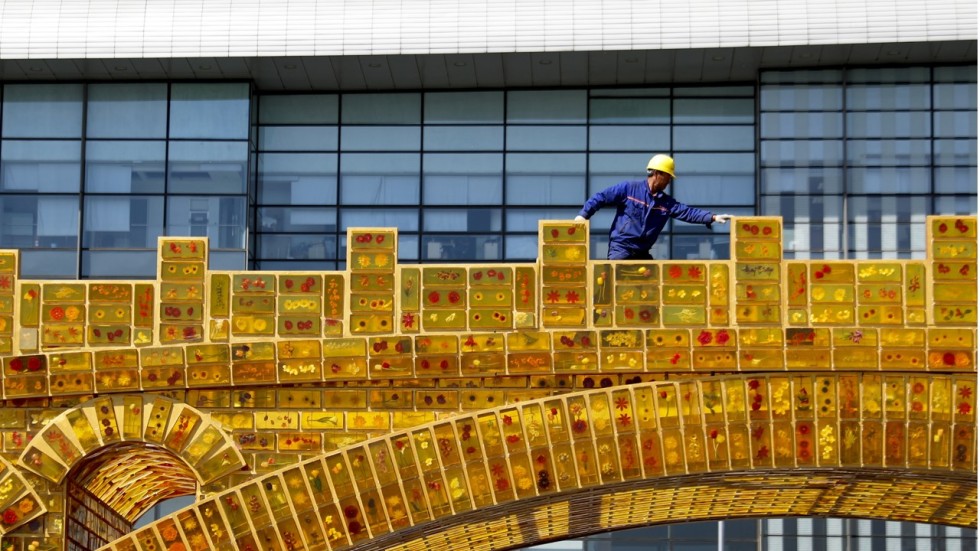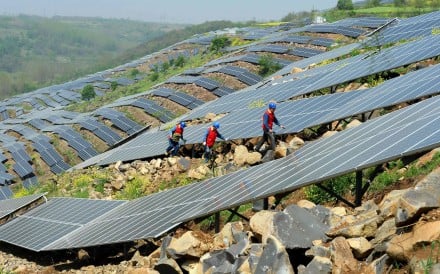Golez: Methinks PRRD will make the Philippines a part of China’s ‘Belt and Road’ plan, make the Philippines its Southeast terminus. This would make the Philippines potentially a part of China's economic orbit which would generate immense economic benefits to the Philippines but would have serious geopolitical and security implications for the country. The overall effect on the country's well being must be carefully studied by the country's economic, security, defense, political, geopolitical and geostrategic braintrust and not decided by only a limited group.
Should such membership in China's economic orbit come to pass, it would have deep geopolitical and security implications as well as impact on our Exclusive Economic Zone claims especially our one million square kilometer West Philippine Sea, 90% of which China claims, and even extend China's influence on the development and protection of our huge 13 million hectare Benham Rise.
Such economic engagement would have serious implications on China's achieving its Strategic Triangle Goal and China's geo-strategic move to break out of the First Island Chain towards the Second Island Chain and consequently control of the Western Pacific. This would prejudice the security and geopolitical position of our treaty ally United States and its allies Japan, South Korea, Australia and New Zealand and of course Taiwan.
Considering the Belt and Road Plan's impact on the Indo Pacific and global balance of power, especially on the status of the US as the hegemon, I do not expect the US to simply sit out and watch the economic and geopolitical consequences to unfold without talking counteraction.
Here's a brief on the "One Belt, One Road" or "Belt and Road" plan of China.
From the South China Morning Post:
"China’s much-discussed “Belt and Road Initiative” will shape the global economic market and geopolitical landscape for years to come. Ahead of a summit devoted to the plan, scheduled to take place on May 14-15 in Beijing, we take a look at its significance."
1. "What is it?
"Previously known as “One Belt, One Road”, the initiative is being spearheaded by the Chinese government to improve trade and economic integration across Asia, Europe, and Africa. The strategy uses free-trade agreements and infrastructure projects – including roads, ports and railways – to create a modern Silk Road spanning some 65 countries, which have a combined gross domestic product (GDP) of US$21 trillion. It includes both an economic land “belt” through Eurasia, and a maritime “road” to connect coastal Chinese cities to Africa and the Mediterranean."
2. "When and why did China create this initiative?
"Chinese President Xi Jinping endorsed the scheme in late 2013, with a stated goal of increasing global economic cooperation. In additional to stimulating China’s own economy, the plan is aimed at bolstering its economic relationships and influence, while providing more political capital at home and abroad."
3. "Many observers have said the initiative could help establish China as a regional power – despite Xi’s insistence the country will not interfere in other nation’s affairs or seek hegemony – on a scale that supersedes the Marshall Plan that the United States launched to help rebuild Europe after the second world war. It also has significant implications for China’s ability to achieve energy security."
4. "How will the plan be financed?
"China established the US$40 billion Silk Road Fund in early 2014 to fund the scheme’s infrastructure projects, including the creation of six economic corridors by building roads, railways, pipelines and highways. Additional financing will come from the Asian Infrastructure Investment Bank (AIIB), the China-backed global bank launched in October 2014 and the New Development Bank (NDB), a Shanghai-based bank for the BRICS (Brazil, Russia, India, China, South Africa) countries."
5. "What is happening at the summit? (May 14-15, 2017 in Beijing)
"In what is expected to be China’s biggest diplomatic event of the year, state leaders will meet in Beijing to discuss the initiative over two days. In January, Xi said the summit was a chance to brainstorm on ways to address regional and global economic problems, and ensure the initiative delivered benefits to all countries involved. Top leaders from at least 28 countries have confirmed their attendance at the summit, including major southeast Asian leaders, as well as Russian President Vladimir Putin."
6. "Top leaders of 28 countries had confirmed they would attend the summit, including Russian President Vladimir Putin, Philippine President Rodrigo Duterte, Turkish President Recep Tayyip Erdogan, Malaysian Prime Minister Najib Razak, Indonesian President Joko Widodo, Vietnamese President Tran Dai Quang and Myanmar’s leader Aung San Suu Kyi, Wang said on Tuesday."
7. "But only one G7 leader is expected to show – Italian Prime Minister Paolo Gentiloni. When Chinese Foreign Minister Wang Yi announced the summit’s guest list in April, he did not mention officials from South Korea, North Korea, or Japan – which have strained ties with China."
8. "What does the scheme mean for the United States and its allies?
"While China bills the “Belt and Road Initiative” as a move toward global economic cooperation, its expansive reach has set off alarm bells for the United States, which has been wary of China’s growing influence. The strategy not only kicks China’s economic standing up a notch, it also challenges trade agreements that have excluded China, such as the Trans-Pacific Partnership, which US President Donald Trump nixed. Neither the United States nor its primary Asian ally, Japan, are part of the China-led AIIB, and neither of their heads of state will be at the upcoming summit."
9. "How is China’s new Silk Road perceived in Europe and Russia?
"Many European countries have openly welcomed China’s initiative, hoping it will attract more Chinese investment and development, but others remain hesitant about Beijing’s growing influence and motivations on the continent. Nations in Europe such as Britain have signalled a willingness to partake in China-led institutions such as the AIIB, despite its exclusion of their ally, the United States."
ECONOMIC CORRIDORS:
1. The New Eurasia Land Bridge Economic Corridor:
"This showpiece of the early “belt and road” programme linked existing railways and constructed new ones over 12,000km from eastern China to Western Europe, allowing faster freight transport than by sea. End-to-end journey times were slashed to 18 days, while agreements allowed streamlined customs clearances. The route crosses Russia, Kazakhstan and Belarus -- which together account for about 1.14 per cent of global GDP -- but links China to the European Union, which account for 14 per cent and 21 per cent of global GDP, respectively."
Way points:
Lianyungang, China, prefecture-level city in northeastern Jiangsu province, China
Lanzhou, China, the capital and largest city of Gansu Province in Northwest China
Urumqi, the capital of the Xinjiang Uyghur Autonomous Region of the People's Republic of China
Alashankou, border city in Bortala Mongol Autonomous Prefecture, Xinjiang Uyghur Autonomous Region, China.
Kazakhstan, is a transcontinental country in northern Central Asia and Eastern Europe. Kazakhstan is the world's largest landlocked country
Moscow
Minsk, capital and largest city of the Republic of Belarus,
Lodz, third-largest city in Poland.
Pardubice, a city in the Czech Republic.
Melanie, a town in Blagoevgrad Province, southwestern Bulgaria
Hamburg, second largest city in Germany,
Duisburg, German city in the western part of the Ruhr Area
Rotterdam, city in the Netherlands,
2. Maritime Silk Road (String of Pearls)
"Likened to a string of pearls, the Maritime Silk Road is the seaborne component of the initiative. Membership often involves Chinese interests in ports and logistics infrastructure along the route, but can also mean other investments. Sri Lanka recently approved a US$1 billion sale of a port to China, while Djibouti hosts a PLA military logistics base."
3. China-Mongolia-Russia Economic Corridor:
"Announced: September 2014
This macro-level tripartite deal consolidated objectives towards infrastructure development, trade and border crossings. There are road and rail projects involved, but the agreement is larger in scale than individual infrastructure or transport projects."
4. China-Central Asia-West Asia Economic Corridor:
"Announced: June 2015
This economic corridor links China's rail system with those of Central and West Asia, running from Xinjiang province in China to Istanbul, Turkey. The wider intent of the deal of “mutually beneficial co-operation” on communications, investment, trade and finance were included in initiating documents. These central and West Asian countries account for about 1.9 per cent of global GDP, but the route connects oil producing countries in the Middle East and Central Asia with China's resource hungry economy."
5. China-Indochina Peninsula Economic Corridor:
"Announced: December 2014
Work is said to be under way on building nine new road links throughout the Greater Mekong region. Work has steamed ahead on China's side, with a new road to the Vietnam border and a rail link connecting Nanning in Guangxi province and Hanoi. The economic corridor aims to enhance transport and industrial projects, according to Chinese Premier Li Keqiang. Greater Mekong countries account for about 1.63 per cent of global GDP."
6. China-Pakistan Economic Corridor:
"Announced: May 2013
China and Pakistan have slowly floated objectives to build economic links between Kashgar in Xinjiang in western China and Pakistan’s southern port of Gwadar. Other projects mentioned include a transnational fibre-optic telecommunications network, an economic zone and highway upgrades. China sends about US$53.8 billion in goods and services to Pakistan and receives about US$22.5 billion, according to IMF data from 2016."
7. Bangladesh-China-India-Myanmar Economic Corridor
Announced: May 2013
The four parties have signed on to jointly study establishing a mechanism for cooperation. Myanmar also hosts an oil pipeline from the Bay of Bengal to China's border, cutting fuel delivery times as tankers no longer need to pass the Malacca Strait to reach Chinese buyers.
https://t.co/kDv8ofdq4B via @SCMP_News
All you need to know about China’s ‘Belt and Road Initiative’: what is it, who’s paying, who’ll benefit and who might lose out
PUBLISHED : Monday, 08 May, 2017, 7:02am
UPDATED : Monday, 08 May, 2017, 5:51pm
China’s much-discussed “Belt and Road Initiative” will shape the global economic market and geopolitical landscape for years to come. Ahead of a summit devoted to the plan, scheduled to take place on May 14-15 in Beijing, we take a look at its significance.
What is it?
Previously known as “One Belt, One Road”, the initiative is being spearheaded by the Chinese government to improve trade and economic integration across Asia, Europe, and Africa. The strategy uses free-trade agreements and infrastructure projects – including roads, ports and railways – to create a modern Silk Road spanning some 65 countries, which have a combined gross domestic product (GDP) of US$21 trillion. It includes both an economic land “belt” through Eurasia, and a maritime “road” to connect coastal Chinese cities to Africa and the Mediterranean.
When and why did China create this initiative?
Chinese President Xi Jinping endorsed the scheme in late 2013, with a stated goal of increasing global economic cooperation. In additional to stimulating China’s own economy, the plan is aimed at bolstering its economic relationships and influence, while providing more political capital at home and abroad.
Many observers have said the initiative could help establish China as a regional power – despite Xi’s insistence the country will not interfere in other nation’s affairs or seek hegemony – on a scale that supersedes the Marshall Plan that the United States launched to help rebuild Europe after the second world war. It also has significant implications for China’s ability to achieve energy security.
How will the plan be financed?
China established the US$40 billion Silk Road Fund in early 2014 to fund the scheme’s infrastructure projects, including the creation of six economic corridors by building roads, railways, pipelines and highways. Additional financing will come from the Asian Infrastructure Investment Bank (AIIB), the China-backed global bank launched in October 2014 and the New Development Bank (NDB), a Shanghai-based bank for the BRICS (Brazil, Russia, India, China, South Africa) countries.

What is happening at the summit?
In what is expected to be China’s biggest diplomatic event of the year, state leaders will meet in Beijing to discuss the initiative over two days. In January, Xi said the summit was a chance to brainstorm on ways to address regional and global economic problems, and ensure the initiative delivered benefits to all countries involved. Top leaders from at least 28 countries have confirmed their attendance at the summit, including major southeast Asian leaders, as well as Russian President Vladimir Putin.
But only one G7 leader is expected to show – Italian Prime Minister Paolo Gentiloni. When Chinese Foreign Minister Wang Yi announced the summit’s guest list in April, he did not mention officials from South Korea, North Korea, or Japan – which have strained ties with China.
What does the scheme mean for the United States and its allies?
While China bills the “Belt and Road Initiative” as a move toward global economic cooperation, its expansive reach has set off alarm bells for the United States, which has been wary of China’s growing influence. The strategy not only kicks China’s economic standing up a notch, it also challenges trade agreements that have excluded China, such as the Trans-Pacific Partnership, which US President Donald Trump nixed. Neither the United States nor its primary Asian ally, Japan, are part of the China-led AIIB, and neither of their heads of state will be at the upcoming summit.
How is China’s new Silk Road perceived in Europe and Russia?
Many European countries have openly welcomed China’s initiative, hoping it will attract more Chinese investment and development, but others remain hesitant about Beijing’s growing influence and motivations on the continent. Nations in Europe such as Britain have signalled a willingness to partake in China-led institutions such as the AIIB, despite its exclusion of their ally, the United States.
But in the wake of post-Brexit Europe, it is difficult to say how perceptions towards the belt and road plan will be shaped. Meanwhile, for Russia, the Silk Road scheme is poised to benefit Sino-Russian relations, as it brings the two countries closer together through joint investments and projects. Much of the scheme also relies on Russian cooperation and involvement, given its strong historical influence in Central Asia, and has been perceived to be economically symbiotic.




No comments:
Post a Comment